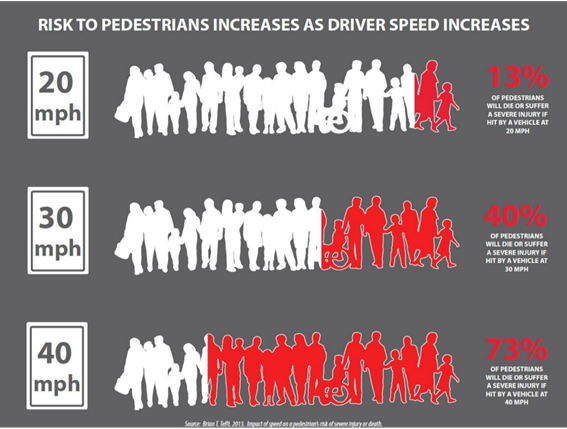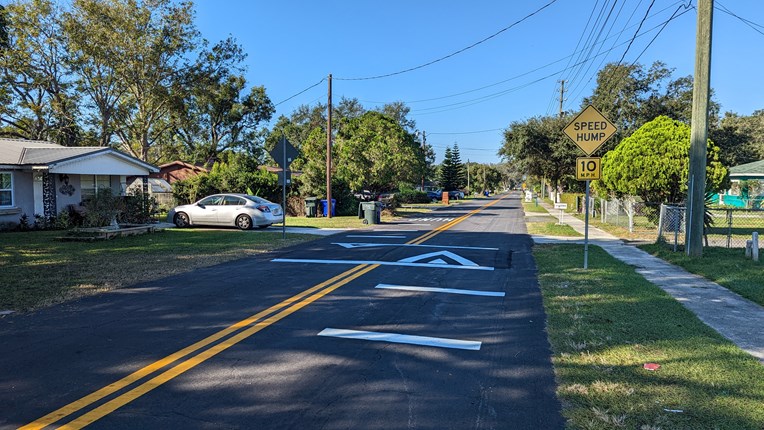Neighborhood Traffic Calming Program
What is traffic calming?
Traffic calming is the installation of physical devices on the roadway with the intention of slowing speeds and/or reducing volumes to provide a safer neighborhood environment.
Need for Traffic Calming
Research has shown that speed is a critical factor in the potential for serious injury or death in crashes between motor vehicles and pedestrians or bicyclists. As a result, the City of Lakeland has determined that any speeding occurring within a residential neighborhood is too much speeding.

Street Eligibility
All City-owned streets classified as local roads are eligible for consideration. Collector roads may be considered for traffic calming at the discretion of the Manager of Traffic Operations.
Types of Traffic Calming Devices that May be Considered:
- Speed Humps
- Chicanes
- Chokers
- Diagonal Diverters
- Median Islands
- Closure/Partial Closure
- Other Devices
Information on these devices may be found on the Federal Highway Administration (FHWA) website: Traffic Calming ePrimer - Safety | Federal Highway Administration (dot.gov)

Traffic Calming Process
Step 1: Request Traffic Calming
Submit an online application for traffic calming along with a neighborhood petition. The petition must contain signatures of a minimum of 25 or at least 50% of the property owners in the Neighborhood (one per street address), whichever is smaller.
Property Owners - Download petition form on the Neighborhood Traffic Calming Application page in the menu bar to the left.
Step 2: Public Meeting
Traffic calming will be provided to those on the waitlist when funding becomes available on a first come, first served basis. Once funding becomes available, the Traffic Operations Division will conduct a neighborhood public meeting to review the program, gauge neighborhood support, and seek input from the community on specific problem areas.
Step 3: Traffic Calming Study
The Traffic Operations Division may schedule and conduct a traffic study within the neighborhood to determine problem areas.
Step 4: Plan Development
The Traffic Engineer will take any data collected, the input received from the community at the public meeting and the layout of the neighborhood into consideration in the development of a neighborhood traffic calming plan.
Step 5: Plan Approval
Once the Traffic Calming Plan has been developed, the Traffic Operations Division will conduct a survey with a 30-day response deadline of all the property owners within the project limits. In order for a proposed traffic calming plan to be approved, the City must receive responses from fifty percent (50%) plus one of the property owners within the neighborhood, and the plan must by supported by sixty-six percent (66%) or more of the property owners responding.
Step 6: Funding and Construction
The plan shall be scheduled for construction upon approval by the Director of Public Works.
Step 7: Project Evaluation, Modification and Removal
Traffic Operations staff will evaluate the project from a safety standpoint within one (1) year after installation.
After the third anniversary of the installation of traffic calming devices, property owners may request removal of traffic calming device(s) upon submission of a petition signed by at least sixty-six percent (66%) of the property owners on the street on which the traffic calming device is located.
Property Owners - Download petition form on the Traffic Calming Application page in the menu bar to the left.








